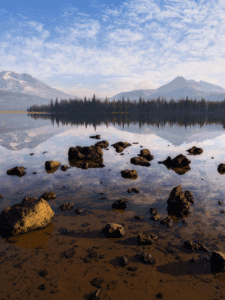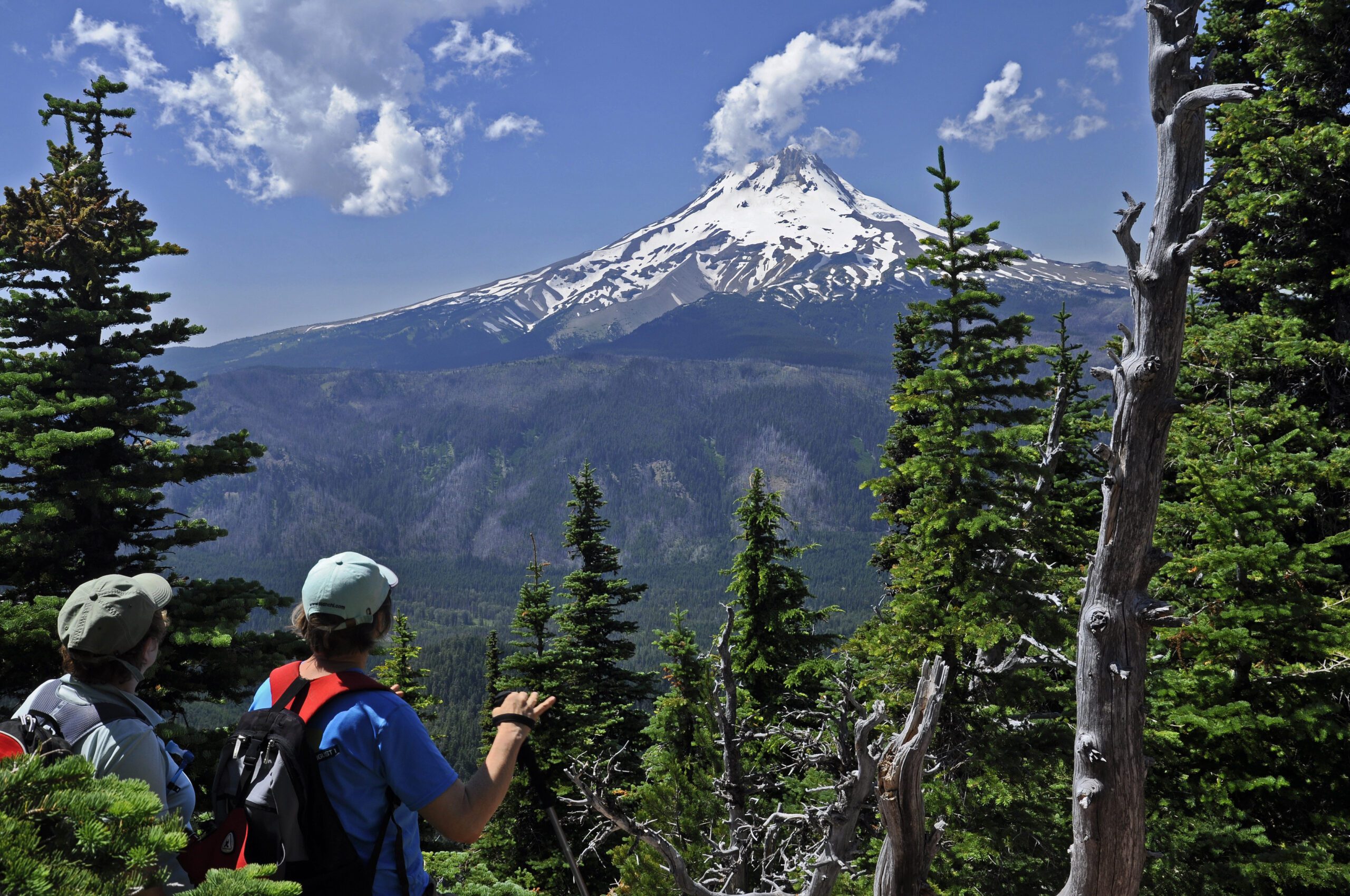Background:
Bluegrass Ridge is part of the eastern slope of majestic Mount Hood. This high elevation oldgrowth forest is directly adjacent to the eastern boundary of the existing Mount Hood Wilderness Area. As a part of the scenic viewshed of Highway 35, Bluegrass Ridge is seen by everyone driving the famous Mount Hood scenic loop between Hood River and Mount Hood. The area is famed for its larch trees, a deciduous conifer whose needles turn bright yellow in the fall.
Ecological, geological, and scenic value:
Old-growth forests of Douglas fir, grand fir, noble fir and western larch characterize the Bluegrass Ridge Addition to the Mount Hood Wilderness. This area provides important habitat for elk and spotted owl. The Forest Service has surveyed several pairs of breeding spotted owls in this forest. Runs of winter and summer steelhead inhabit the streams in Bluegrass Ridge, which provide cold, clear waters for downstream runs of Coho. The area also has habitat suitable for pine marten, pileated woodpecker, ruffed grouse, and deer.
Opportunities for solitude and primitive recreation:

Hiking, backpacking, snowshoeing, and cross country skiing are popular recreation activities in Bluegrass Ridge. The Bluegrass Ridge Trail and Elk Mountain Trail offer spectacular views of the upper Hood River Valley and Mount Hood. These trails connect with other great trails like the Timberline Trail and the Pacific Crest Trail offering extended backcountry options to explore the Mount Hood Wilderness. Easy access for snowshoeing in the winter, and great wildflowers in the summer make this special area an easy place to find solitude and enjoy primitive recreation.
Threats:
The Bluegrass Ridge area remains open to logging and until the area is designated as Wilderness, the future of its forests remains uncertain. Protecting Bluegrass Ridge now would be a healthy form of preventative medicine for the clean waters, spotted owl, and fish habitat the area provides.



